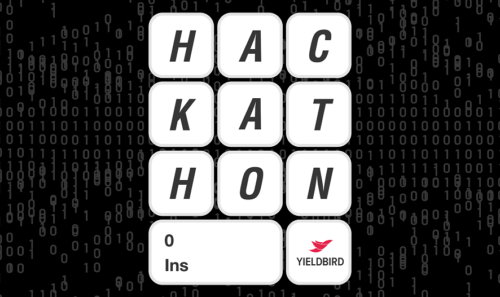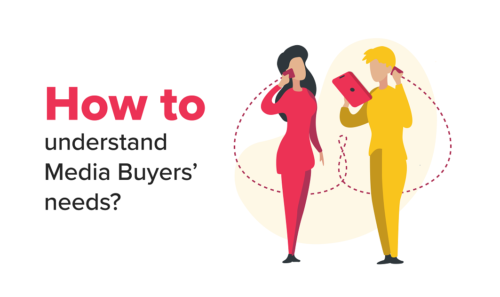The Rise of Programmatic Buying. Ultimate Promise of Brand Advertising in the Digital Age.
The current digital marketing ecosystem is expanding and developing in leaps and bounds. We ourselves are so deep into the intricacies of header bidding (a sophisticated usage of data that improves monetization techniques) that even we sometimes get lost and lose some of the basics. With this in mind, most terms in the field need to constantly be refreshed, since their meanings can moderately change in the blink of an eye. No need to lose your head though. Yieldbird is here to sail you through the programmatic essentials, bringing a fresh dose of what programmatic actually means and defining the key terms that every publisher, advertiser, and marketer should know.
BUY, SELL, PROGRAMMATIC.
No matter your question, always what matters most is generating interest in your product, engaging, moving and winning new customers. Undoubtedly, it’s become the daily standard to instantly respond to your targeted audience in real-time, show outstanding, creativity, and offer inspiration. But how do you achieve all that? The simple answer is programmatic buying – make the most of the vast array of possibilities when reaching out to your desired audience.
KEEP IT CLEAR, MAKE IT EASY.
But let’s cut to the chase. Programmatic is an automated way of buying, selling, or fulfilling advertising campaigns. Simply put, the term programmatic stands for the automated buying of digital advertising space to increase both the efficiency and profitability of ad buying. Programmatic works like a charm when it allows advertisers to speed up and replace the traditional, expensive, and unreliable process of buying a set number of impressions based on a given order. With programmatic buying, the technology purchases ads in real-time.
It works for publishers, too. Through an automated process, machines put all your ducks in a row and decide on which ads to display and at what price, based on third-party or first-party data. Figuratively speaking, programmatic technology is much like the back-room boys and girls who know all tricks of the ad trade, and they don’t wait for the grass to grow under their feet. In brief, it’s a faster, cheaper, and more effective way of delivering content to consumers within the digital landscape.

THINK GLOBAL. THINK AUTOMATION.
So the automated ad purchasing process delivers the goods on a global scale. Automation has become a widespread phenomenon in the advertising business. No question about that. Remember the switchboard operators back in the early days, inserting phone plugs into the switchboard? Before the automation era stepped in with direct-dialed long distance calls, the human factor was an inherent element of the communication process. Similarly, stock-brokers were, at some point, superseded by algorithms.
Yet, it’s not a matter of losing jobs as many people see it. Automation actually opens up a multitude of new possibilities and professions. It’s just a matter of exploring all the possible avenues. Technology opens innovative paths, from texts, MMs, and Internet, to high-frequency trading, leveraging high-frequency financial data, and electronic trading tools.
HOW THE MARKET TAILORS PROGRAMMATIC ADVERTISING TO ITS NEEDS
Programmatic buying verifies how brands can use audience insights and technological innovations to custom-make clear-cut messages to preferred target groups. But when the time and context is right, of course. When delivering a set of advertisements to a user, a number of user-oriented factors and parameters are taken into account, such as browsing history and viewing indicators. All the user-based data helps the advertiser estimate the user’s actual value. This way, each single ad view is priced more precisely by the advertisers aiming at their target group. Publishers, on the other hand, benefit from programmatic too, since more valuable users attract advertisers who are eager to spend more on ad space through an auction.
WIDE PRAXIS, STILL PROGRAMMATIC
And yet, with so many programmatic options to choose from, it’s easy to lose one’s bearings. There are various types of programmatic transactions, such as open auctions (also known as Real Time Bidding), and Private Marketplaces (PMPs) which include Private Auctions and Preferred Deals (PDs). Programmatic technology is constantly evolving, and you need to recognize that these options are key programmatic buying methods if you want to stay in the loop.
Let’s a have closer look at what open auctions put on the table. They also go by the name Real Time Bidding [RTB]. In fact, the mechanism works like it sounds: algorithms bid for each impression, using data from users. It takes them up to 4 milliseconds, so it’s pretty close to being real-time.
Open auctions are now the most widely selected programmatic option compared to preferred deals or private auctions. However, this might soon no longer be the case, as a change is just around the corner. According to Zenith Media, in the last year, a large and growing number of publishers followed the PMP buying model.
Let’s have a look then at what Private Marketplaces are. They are said to be the quickest premium programmatic buying product that’s easily adaptable to majority markets around the world. Currently, an increasing number of publishers sell their inventories in PMPs through preferred deals or private auctions.
To put it simply, when buying via PMPs, agencies declare in advance how much they’re willing to spend on inventory. They’re also ready to pay more for high-class inventory and the prioritization of their ads being displayed. This offers a bunch of benefits, such as long-term cooperation between advertisers and publishers, less low-quality ads being displayed, and more transparent inventory deals. Yet, with PMPs, the bidders are still somewhat testing the waters and exploring its potential as they compare it to the availability offered by open auctions.
WHY DOES PROGRAMMATIC MATTER NOW?
We did say that the distribution of advertising traded programmatically is on the rise. It’s clear that many agencies have built their in-house teams to handle programmatic ad buying. That’s because they know what to expect down the road. Even TV is being affected by programmatic technology. New programmatic formats are now being developed, like TV spots, audio ads, out-of-home, and AI/VR ads.
Programmatic lets you significantly reduce the time and resources necessary for advertisements to be displayed. The algorithmic ad-buying system is more efficient and therefore cheaper, as the human factor is somewhat eliminated from the process. Yet, it’s a fact that no matter what programmatic solution you choose, the unparalleled flexibility to optimize the use of inventory or to decide which views to buy will always strike it lucky. And that’s a win-win situation for both sides.
PROGRAMMATIC BUYING ON THE RISE
Programmatic paved its way as a modern advanced tool in areas such as inventory quality, organized audience insights, creative flexibility, and reaching audiences with precision across screens and channels. The widespread adoption of programmatic buying is not a matter of the future, but a matter of the now. We have never been closer to successfully embracing programmatic buying.






